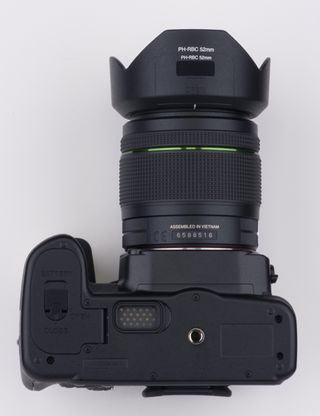Why you can trust TechRadar
One area in which Pentax has largely left things as they were is with design: the Pentax K-5 body externally remains very similar to the Pentax K-7 body. You have to look closely for any changes, although the K-5 exposure mode dial is noticeably taller which helps in its turning.
The body is constructed from a durable magnesium alloy, and has been sealed against dust and water incursion around all vulnerable points. It's perhaps lighter and smaller than its specifications may suggest, but the benefit of this is that it presents no problem when carried around for prolonged periods of time, even with the moderate heft of a wide-aperture zoom lens.
The handling areas around the grip and thumb-rest do away with some of the more intricate contouring seen on other models, and instead focus on simply providing enough room for users with any size of hand to get enough purchase.

Although there's plenty of space around the back for the thumb to sit comfortably, this hasn't come to the detriment of button and control spacing. In fact, it's hard to imagine how better the controls could be either arranged or labeled, although the menu button sitting towards the bottom isn't something that will please everyone.
The functions within the menu system itself are sensibly organised in order of importance, and Pentax has opted for a scrolling display of longer-named functions in place of any mysterious abbreviations.
All of this is assisted by three different displays which alternate upon presses of the Info button, namely a status screen which consists of all major settings in use; a control panel where changes may be made to these settings; and an airplane-style electronic level display which offers indicators for both roll and tilt.
Sadly, a handful of quirks do stand in the way of quick and easy access to certain settings. The collar underneath the mode dial, for example, which is used for switching between metering modes, is conveniently placed for quick manual adjustment, although its stiffness together with the shallow lever by which it is operated make such a simple task a touch trickier than it should be.
Similarly, it's puzzling as to why the microphone port is covered with an integrated rubber plug, while the screw-in cover on the flash-sync socket is not just separate from the camera, but so small and awkward to remove that it makes it very easy to lose.

I'm off to France this summer, and this app could make me très fluent

Intel unveils flurry of new Arc GPUs — however serious graphics users will have to wait for more powerful models, as these focus on a completely different and more lucrative market

We just got another hint that the Samsung Galaxy Watch 7 is almost here
